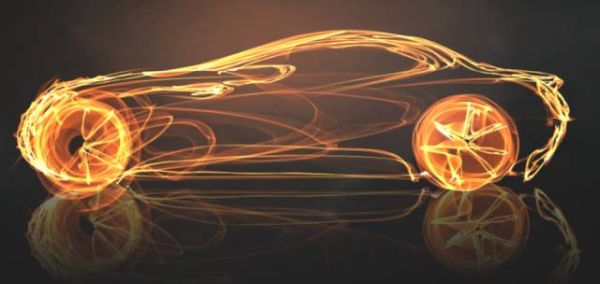During the 2017 Chief Analyst Market Seminar, held by LEDinside and CNLED on February 20th, when asked about the future of automotive LED lighting, C.W. Wang, Deputy Director of Automotive Lighting Department, EVERLIGHT, said, “With the adoption of LED lighting and smart technology, the car of the future is more than just transport. This is the trend in automotive LED lighting.”
Interior LED lighting: from function-based to atmosphere-centric
With various new functions and innovative designs, nowadays a car is no longer just a transport mode.
Recently, photos showing taxi drivers selling sweets and snacks inside their cabs have caused quite a stir on social media. Services like this further proves that a car has actually become a small living space.
In light of this trend, interior automotive lighting has undergone changes as well. For instance, single colored lighting has been replaced by lighting with two, three or even four colors. In addition, the shift to warm yellow light, which creates a warmer atmosphere for drivers, is also an example of the changing need from function based to atmosphere-centric.
In addition, by adopting a single LED module with less LEDs and multi-color chips, there will be more lighting functions and thus enhances the interior atmosphere.
Exterior LED lighting holds great potential
Compared to interior light, exterior LED lighting has greater potential. LED is a point light source with smaller size and higher brightness. When used in automotive design, this kind of light source shows more flexibility and can improve the aesthetic of a car. Therefore, LEDs are now widely used in tail lights, third brake lights, daytime running lights, headlights and turn-signal lights.
Meanwhile, the increasing adoption of advanced driver assistance systems (ADAS) has also increased the demand for LEDs. ADAS can be installed in the interior and the exterior of cars. The interior one features an active sensor, gesture sensor and light sensor. The exterior one has a smart sensor, collision avoidance sensor and night vision sensor. Currently, these sensor systems have greatly improved driving safety.
Daytime running lights become standard equipment
Safety is always the top priority for both driverless cars and smart cars. In terms of exterior LED lighting applications, daytime running lights (DRLs) have become standard equipment. Statistics show that DRLs can reduce the number of daytime car accidents by almost 60%. Although carrying DRLs is currently not mandatory in every country, but the adoption rate has no doubt increased.
Traditionally, DRLs used LED bulbs with higher wattage, so they required less LEDs. However, they emitted lights that made people feel uncomfortable. That is why these types of DRLs were rarely adopted. As technology improved, more and more companies started to use medium-power LEDs for DRLs to reduce glare for comfortable lighting levels.
As DRLs become standard equipment globally, the design of car has to adjust accordingly. DRLs require an additional LED module on the exterior. In addition, as simplicity in car design takes center stage, DRLs can also be combined with turn-signals by using a single LED module. In terms of high power solutions, DRLs and turn-signals are installed separately.
Design of LED headlights varies in different countries
Regarding LED headlights, design varies due to contrasting needs in different countries. For instance, Matrix beam LED lighting is widely used in high-end models in the US and Europe. It uses multiple LEDs to allow drivers to constantly have high beams on. On the contrary, Japanese models adopt high power solutions with less LEDs.
In some rural areas in the US and Europe, oftentimes there are no street lights, so drivers need high beam headlights to see the lanes and hazards on the road. However, high beam headlights will blind the oncoming drivers, posing serious threat to road safety. Matrix beam, on the other hand, is a safer option because it will automatically turn off lights directed toward oncoming vehicles.
In Japan, however, street lights are more common and applications like Matrix beam are not necessary. Headlights used in Japanese cars usually adopt high power solutions with less LEDs.













